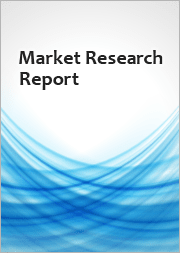
|
시장보고서
상품코드
1792399
다형성 교모세포종 치료 시장 보고서 : 약제 유형, 투여 경로, 분자 유형, 유통 채널, 지역별(2025-2033년)Glioblastoma Multiforme Treatment Market Report by Drug Type, Route of Administration, Type of Molecule, Distribution Channel, and Region 2025-2033 |
||||||
세계의 다형성 교모세포종 치료 시장 규모는 2024년 23억 달러에 달했습니다. 향후 IMARC Group은 시장이 2033년까지 41억 달러에 이르고, 2025년부터 2033년까지 6.39%의 연평균 복합 성장률(CAGR)로 성장할 것으로 예측했습니다.
등급 IV의 성상세포종으로도 알려진 다형성 교모세포종은 악성도 IV의 뇌종양으로 뇌세포 내로 빠르게 확산되어 이웃 세포에 감염될 수 있습니다. 급속한 세포 변성이 특징이기 때문에 뇌에 큰 압력이 가해져 심한 두통이나 발작을 일으킵니다. 정확한 원인은 아직 알려지지 않았지만, 터콧 증후군과 같은 드문 유전성 질환을 비롯한 여러 요인이 원인으로 간주됩니다. 뇌종양 중에서도 치사율이 높고 치료 저항성이기 때문에 진단 후 생존 기간은 매우 짧습니다. 현재 치료법은 수술 절제, 화학 요법, 방사선 요법입니다.
종양 질환의 유병률 증가와 세계 노인 인구 증가는 시장 성장을 가속하는 주요 요인 중 하나입니다. 또한, 신경 교종 줄기 세포의 저항 특성에 대항하는 고급 치료법의 개발도 시장 성장에 긍정적인 영향을 미칩니다. 또한, 암과 관련 질환에 대한 분자 생명공학과 유전자 치료의 R&D(R&D) 활동 증가는 다양한 생물학적 약물의 개발을 촉진하고 있습니다. 이러한 약물은 기존 치료법의 부작용을 완화하는 데 도움이 되므로 환자에게 널리 받아들여지고 있습니다. 게다가, 헬스케어 인프라를 개선하기 위해서 세계 각국의 정부가 하고 있는 대처나, 다양한 치료법이 이용 가능하다는 인식의 높아짐이, 시장에 밝은 전망을 가져올 것으로 기대되고 있습니다.
이 보고서에서 다루는 주요 질문
- 2024년 세계의 다형성 교모세포종 치료 시장 규모는?
- 2025-2033년에 있어서의 다형성 교모세포종 치료 세계 시장 예측 성장률은?
- 다형성 교모세포종 치료 세계 시장을 견인하는 주요 원인은?
- 다형성 교모세포종 치료 세계 시장에서 COVID-19의 영향은?
- 다형성 교모세포종 치료 세계 시장에서 투여 경로별 구분은?
- 다형성 교모세포종 치료 세계 시장에서 분자 유형별 구분은?
- 다형성 교모세포종 치료 세계 시장에서 판매 채널별 구분은?
- 다형성 교모세포종 치료 세계 시장에서 주요 지역은?
- 세계의 다형성 교모세포종 치료 시장에서 주요 기업은?
목차
제1장 서문
제2장 조사 범위와 조사 방법
- 조사의 목적
- 이해관계자
- 데이터 소스
- 1차 정보
- 2차 정보
- 시장 추정
- 상향식 접근
- 하향식 접근
- 조사 방법
제3장 주요 요약
제4장 소개
- 개요
- 주요 업계 동향
제5장 세계의 다형성 교모세포종 치료 시장
- 시장 개요
- 시장 실적
- COVID-19의 영향
- 시장 분석 : 약제 유형별
- 시장 분석 : 투여 경로별
- 시장 분석 : 분자 유형별
- 시장 분석 : 유통채널별
- 시장 분석 : 지역별
- 시장 예측
제6장 시장 분석 : 약제 유형별
- Temozolomide
- Bevacizumab
- Carmustine
- Radiosensitizers
- 기타
제7장 시장 분석 : 투여 경로별
- 경구
- 비경구
제8장 시장 분석 : 분자 유형별
- 저분자 의약품
- 바이오의약품
제9장 시장 분석 : 유통채널별
- 병원
- 약국
- 기타
제10장 시장 분석 : 지역별
- 북미
- 유럽
- 아시아태평양
- 중동 및 아프리카
- 라틴아메리카
제11장 SWOT 분석
- 개요
- 강점
- 약점
- 기회
- 위협
제12장 밸류체인 분석
제13장 Porter's Five Forces 분석
- 개요
- 구매자의 협상력
- 공급기업의 협상력
- 경쟁도
- 신규 참가업체의 위협
- 대체품의 위협
제14장 가격 분석
제15장 경쟁 구도
- 시장 구조
- 주요 기업
- 주요 기업 프로파일
- Sun Pharmaceutical Industries
- Celldex Therapeutics
- Pfizer
- F. Hoffmann La Roche
- Bristol-Myers Squibb
- Teva Pharmaceuticals
- Exelixis
- Angiochem
- Arbor Pharmaceuticals
The global glioblastoma multiforme treatment market size reached USD 2.3 Billion in 2024. Looking forward, IMARC Group expects the market to reach USD 4.1 Billion by 2033, exhibiting a growth rate (CAGR) of 6.39% during 2025-2033.
Glioblastoma multiforme, also known as grade IV astrocytoma, is a malignant grade IV brain tumor that rapidly spreads within the brain cells and can also infect the nearby cells. Since it is characterized by rapid cell degeneration, it creates immense pressure on the brain resulting in severe headaches and seizures. Although the exact cause of the diseases is still unknown, several factors including rare hereditary disorders such as Turcot syndrome are believed to be its cause. It is one of the most lethal forms of brain cancer and is treatment-resistant in nature, wherein the patient has an extremely short survival period post-diagnosis. The current treatment procedure of the disease includes surgical resection, chemotherapy and radiation.
Increasing prevalence of oncological diseases and a growing geriatric population across the globe are among the key factors driving the market growth. Furthermore, the development of advanced treatment methods that counter the resistive properties of glioma stem cells is also positively influencing the market growth. Additionally, increasing research and development (R&D) activities in molecular biotechnology and gene therapy for cancer and related diseases have facilitated the development of various biological drugs. These drugs assist in diminishing the side-effects of the existing treatment methods, thus creating broader acceptance amongst patients. Moreover, initiatives undertaken by several governments across the globe to improve healthcare infrastructure, along with the rising awareness of the availability of various therapies, are further expected to create a positive outlook for the market.
Key Market Segmentation:
Breakup by Drug Type:
- Temozolomide
- Bevacizumab
- Carmustine
- Radiosensitizers
- Others
Breakup by Route of Administration:
- Oral
- Parenteral
Breakup by Type of Molecule:
- Small Molecule
- Biologics
Breakup by Distribution Channel:
- Hospitals
- Pharmacies
- Others
Breakup by Region:
- North America
- Europe
- Asia Pacific
- Middle East and Africa
- Latin America
Competitive Landscape:
The report has also analysed the competitive landscape of the market with some of the key players being Sun Pharmaceutical Industries, Celldex Therapeutics, Pfizer, F. Hoffmann La Roche, Bristol-Myers Squibb, Teva Pharmaceuticals, Exelixis, Angiochem and Arbor Pharmaceuticals.
IMARC Group's latest report provides a deep insight into the global glioblastoma multiforme treatment market covering all its essential aspects. This ranges from macro overview of the market to micro details of the industry performance, recent trends, key market drivers and challenges, SWOT analysis, Porter's five forces analysis, value chain analysis, etc. This report is a must-read for entrepreneurs, investors, researchers, consultants, business strategists, and all those who have any kind of stake or are planning to foray into the glioblastoma multiforme treatment market in any manner.
Key Questions Answered in This Report
- 1.What was the size of the global glioblastoma multiforme treatment market in 2024?
- 2.What is the expected growth rate of the global glioblastoma multiforme treatment market during 2025-2033?
- 3.What are the key factors driving the global glioblastoma multiforme treatment market?
- 4.What has been the impact of COVID-19 on the global glioblastoma multiforme treatment market?
- 5.What is the breakup of the global glioblastoma multiforme treatment market based on the route of administration?
- 6.What is the breakup of the global glioblastoma multiforme treatment market based on the type of molecule?
- 7.What is the breakup of the global glioblastoma multiforme treatment market based on the distribution channel?
- 8.What are the key regions in the global glioblastoma multiforme treatment market?
- 9.Who are the key players/companies in the global glioblastoma multiforme treatment market?
Table of Contents
1 Preface
2 Scope and Methodology
- 2.1 Objectives of the Study
- 2.2 Stakeholders
- 2.3 Data Sources
- 2.3.1 Primary Sources
- 2.3.2 Secondary Sources
- 2.4 Market Estimation
- 2.4.1 Bottom-Up Approach
- 2.4.2 Top-Down Approach
- 2.5 Forecasting Methodology
3 Executive Summary
4 Introduction
- 4.1 Overview
- 4.2 Key Industry Trends
5 Global Glioblastoma Multiforme Treatment Market
- 5.1 Market Overview
- 5.2 Market Performance
- 5.3 Impact of COVID-19
- 5.4 Market Breakup by Drug Type
- 5.5 Market Breakup by Route of Administration
- 5.6 Market Breakup by Type of Molecule
- 5.7 Market Breakup by Distribution Channel
- 5.8 Market Breakup by Region
- 5.9 Market Forecast
6 Market Breakup by Drug Type
- 6.1 Temozolomide
- 6.1.1 Market Trends
- 6.1.2 Market Forecast
- 6.2 Bevacizumab
- 6.2.1 Market Trends
- 6.2.2 Market Forecast
- 6.3 Carmustine
- 6.3.1 Market Trends
- 6.3.2 Market Forecast
- 6.4 Radiosensitizers
- 6.4.1 Market Trends
- 6.4.2 Market Forecast
- 6.5 Others
- 6.5.1 Market Trends
- 6.5.2 Market Forecast
7 Market Breakup by Route of Administration
- 7.1 Oral
- 7.1.1 Market Trends
- 7.1.2 Market Forecast
- 7.2 Parenteral
- 7.2.1 Market Trends
- 7.2.2 Market Forecast
8 Market Breakup by Type of Molecule
- 8.1 Small Molecule
- 8.1.1 Market Trends
- 8.1.2 Market Forecast
- 8.2 Biologics
- 8.2.1 Market Trends
- 8.2.2 Market Forecast
9 Market Breakup by Distribution Channel
- 9.1 Hospitals
- 9.1.1 Market Trends
- 9.1.2 Market Forecast
- 9.2 Pharmacies
- 9.2.1 Market Trends
- 9.2.2 Market Forecast
- 9.3 Others
- 9.3.1 Market Trends
- 9.3.2 Market Forecast
10 Market Breakup by Region
- 10.1 North America
- 10.1.1 Market Trends
- 10.1.2 Market Forecast
- 10.2 Europe
- 10.2.1 Market Trends
- 10.2.2 Market Forecast
- 10.3 Asia Pacific
- 10.3.1 Market Trends
- 10.3.2 Market Forecast
- 10.4 Middle East and Africa
- 10.4.1 Market Trends
- 10.4.2 Market Forecast
- 10.5 Latin America
- 10.5.1 Market Trends
- 10.5.2 Market Forecast
11 SWOT Analysis
- 11.1 Overview
- 11.2 Strengths
- 11.3 Weaknesses
- 11.4 Opportunities
- 11.5 Threats
12 Value Chain Analysis
13 Porters Five Forces Analysis
- 13.1 Overview
- 13.2 Bargaining Power of Buyers
- 13.3 Bargaining Power of Suppliers
- 13.4 Degree of Competition
- 13.5 Threat of New Entrants
- 13.6 Threat of Substitutes
14 Price Analysis
15 Competitive Landscape
- 15.1 Market Structure
- 15.2 Key Players
- 15.3 Profiles of Key Players
- 15.3.1 Sun Pharmaceutical Industries
- 15.3.2 Celldex Therapeutics
- 15.3.3 Pfizer
- 15.3.4 F. Hoffmann La Roche
- 15.3.5 Bristol-Myers Squibb
- 15.3.6 Teva Pharmaceuticals
- 15.3.7 Exelixis
- 15.3.8 Angiochem
- 15.3.9 Arbor Pharmaceuticals



















